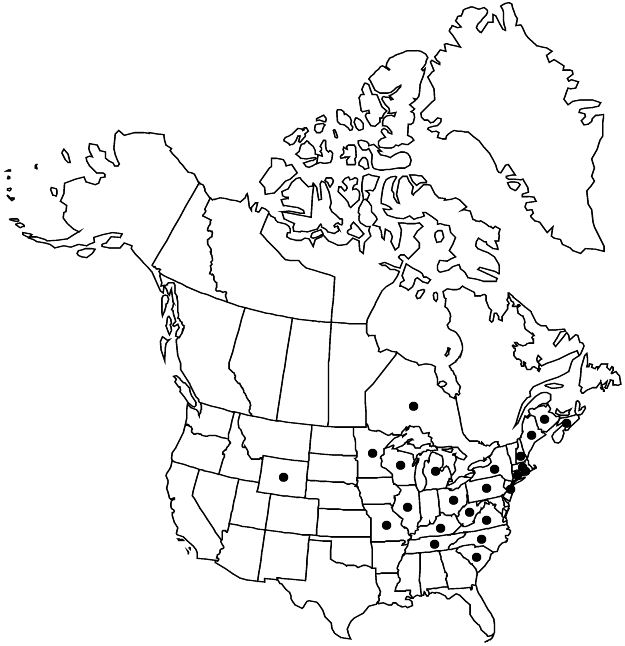Difference between revisions of "Malus baccata"
Theor. Prakt. Handb. Forstbot. 2: 1280. 1803.
FNA>Volume Importer |
imported>Volume Importer |
||
| (5 intermediate revisions by 2 users not shown) | |||
| Line 12: | Line 12: | ||
|label=Introduced | |label=Introduced | ||
}} | }} | ||
| − | |basionyms={{Treatment/ID/ | + | |basionyms={{Treatment/ID/Basionym |
|name=Pyrus baccata | |name=Pyrus baccata | ||
|authority=Linnaeus | |authority=Linnaeus | ||
| + | |rank=species | ||
| + | |publication_title=Syst. Nat. ed. | ||
| + | |publication_place=12, 2: 344. 1767 | ||
}} | }} | ||
|synonyms={{Treatment/ID/Synonym | |synonyms={{Treatment/ID/Synonym | ||
|name=Undefined mant. | |name=Undefined mant. | ||
|authority=Pl. 1: 75. 1767 | |authority=Pl. 1: 75. 1767 | ||
| + | |rank=species | ||
}} | }} | ||
|hierarchy=Rosaceae;Rosaceae subfam. Amygdaloideae;Rosaceae tribe Gillenieae;Malus;Malus baccata | |hierarchy=Rosaceae;Rosaceae subfam. Amygdaloideae;Rosaceae tribe Gillenieae;Malus;Malus baccata | ||
| Line 34: | Line 38: | ||
|elevation=0–1500 m | |elevation=0–1500 m | ||
|distribution=N.B.;N.S.;Ont.;Conn.;Ill.;Ky.;Maine;Mass.;Mich.;Minn.;Mo.;N.H.;N.J.;N.Y.;N.C.;Ohio;Pa.;R.I.;S.C.;Tenn.;Va.;W.Va.;Wis.;Wyo.;Asia;introduced also in Europe. | |distribution=N.B.;N.S.;Ont.;Conn.;Ill.;Ky.;Maine;Mass.;Mich.;Minn.;Mo.;N.H.;N.J.;N.Y.;N.C.;Ohio;Pa.;R.I.;S.C.;Tenn.;Va.;W.Va.;Wis.;Wyo.;Asia;introduced also in Europe. | ||
| + | |introduced=true | ||
|discussion=<p><i>Malus baccata</i> is grown ornamentally for flowers and fruit (red or yellow) and occasionally escapes from cultivation. The species is used as a rootstock for grafting other apple cultivars and is a possible genetic source of disease resistance and cold hardiness. The species is possibly naturalized in Honduras.</p> | |discussion=<p><i>Malus baccata</i> is grown ornamentally for flowers and fruit (red or yellow) and occasionally escapes from cultivation. The species is used as a rootstock for grafting other apple cultivars and is a possible genetic source of disease resistance and cold hardiness. The species is possibly naturalized in Honduras.</p> | ||
|tables= | |tables= | ||
| Line 43: | Line 48: | ||
-->{{#Taxon: | -->{{#Taxon: | ||
name=Malus baccata | name=Malus baccata | ||
| − | |||
|authority=(Linnaeus) Borkhausen | |authority=(Linnaeus) Borkhausen | ||
|rank=species | |rank=species | ||
| Line 59: | Line 63: | ||
|publication year=1803 | |publication year=1803 | ||
|special status=Introduced | |special status=Introduced | ||
| − | |source xml=https:// | + | |source xml=https://bitbucket.org/aafc-mbb/fna-data-curation/src/2e0870ddd59836b60bcf96646a41e87ea5a5943a/coarse_grained_fna_xml/V9/V9_805.xml |
|subfamily=Rosaceae subfam. Amygdaloideae | |subfamily=Rosaceae subfam. Amygdaloideae | ||
|tribe=Rosaceae tribe Gillenieae | |tribe=Rosaceae tribe Gillenieae | ||
Latest revision as of 22:59, 5 November 2020
Trees, 100–140 dm. Stems to 30 cm diam.; bark dark gray with platelike scales; young branches reddish orange and glabrous, becoming reddish brown; flowering shoots becoming spurs, 3–10(–25) mm. Buds reddish brown, ovoid, 3–4 mm, scale margins tomentose. Leaves convolute in bud; isomorphic; stipules deciduous or persistent on vigorous shoot leaves, lanceolate, sometimes filiform, 3 mm, apex acuminate; petiole 20–50 mm, glabrous; blade elliptic or ovate, 3–8 × 2–3.5 cm, base cuneate or rounded, margins unlobed, serrate, apex long-acuminate, sometimes caudate, surfaces glabrous or slightly puberulent when young. Panicles umbel-like; peduncles absent; bracteoles absent. Pedicels 15–40 mm, glabrous. Flowers not fragrant, 30–35 mm diam.; hypanthium constricted distal to ovaries, glabrous; sepals lanceolate, 5–7 mm, longer than tube, apex acuminate, abaxial surface glabrous, adaxial tomentose; petals white, obovate, 20–30 mm, claws 1–2 mm, margins entire, apex obtuse rounded; stamens 15–20, 7–9 mm, anthers yellow before dehiscence; styles (4 or)5, basally connate to 1/2 length, 8–10 mm, longer than stamens, densely villous basally. Pomes yellow to red, subglobose, 8–10 mm diam., cores enclosed at apex; sepals deciduous; sclereids sparse surrounding core. Seeds light reddish brown. 2n = 34.
Phenology: Flowering Apr–Jun; fruiting Sep–Oct.
Habitat: Roadsides, pastures, mixed woods, thickets
Elevation: 0–1500 m
Distribution

Introduced; N.B., N.S., Ont., Conn., Ill., Ky., Maine, Mass., Mich., Minn., Mo., N.H., N.J., N.Y., N.C., Ohio, Pa., R.I., S.C., Tenn., Va., W.Va., Wis., Wyo., Asia, introduced also in Europe.
Discussion
Malus baccata is grown ornamentally for flowers and fruit (red or yellow) and occasionally escapes from cultivation. The species is used as a rootstock for grafting other apple cultivars and is a possible genetic source of disease resistance and cold hardiness. The species is possibly naturalized in Honduras.
Selected References
None.